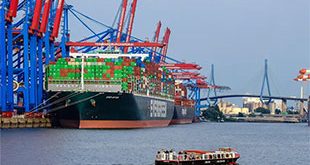
By Job A. Kahigwa
Urgent action needed as global energy game changers threaten projected benefits
Since 2006 when its commercial oil discoveries were announced, Uganda has been preparing to join the ranks of the newest oil producing countries in the world. Seven years down the road (and more to come), no commercial oil has been produced yet.
The question often asked is why this long? But there is a more serious question that needs to be addressed: Will the country’s oil at the time of production keep pace with the fast developments and economic forces shaping the global oil market?
Two fundamental issues come to mind: The fast changing global energy matrix, and the correlations between the new oil market, Uganda’s future crude oil demand, and its pricing. Crude oil prices on the world commodity market are influenced by global demand and supply forces and the machinations of the Organisation of Petroleum Exporting Countries (OPEC).

Speculation today is that oil prices will keep on an upward trajectory having peaked from over US$70 a barrel in 2006 to above US$100 a barrel from late 2011 to date. This trend begun in 1999 when low prices that had dominated the 20th century ended.
However, oil markets do not always respond as predicted. This is what led to the effectiveness of OPEC’s oil pricing role being contested and its demise predicted following its inability to defend the 1998 oil price collapse and the 2004 rise.
Uganda, therefore, needs to critically analyse the causes of the post 2006 oil price rise after over a century of stagnation and pick lessons. It will find a coincidence of factors explain this trajectory, including increased business asset and infrastructure value, low investment in new exploration and production (E&P), the 1990s boom in consumer economies like the USA and increased demand for oil in China and the Far East among others.
It is not clear whether this price rise and decline represent a cyclical movement that corrects itself, or whether they are structural. Oil price volatility has been a matter of ‘history repeating itself’. How this and the development of hydrocarbons will impact upon Uganda’s future oil production and trade is for the analysts to contemplate.
There are, however, fundamental developments in the international fossil fuels trade and industry, whose geopolitical and economic implications deserve immediate attention.
Trend of crude oil prices from 1869 to October 2011

Source: WTRG Economics
This article does not seek to set out “the right answer” or to suggest which policy decisions government should take.
Instead, it aims to frame discussion, analysis, and debate on the implications, uncertainties, and trade-offs of the developments in world energy sector and its impact on countries like Uganda. The developments are both disruptive and beneficial and our challenge is not how to resist but rather, how to adapt our projections to them.
Real threats
Contrary to the contention of advocates and theorists of ‘peak oil’ that the world is running out of oil, new unconventional sources of fossil fuels are emerging. These are global energy game changers and a real threat to the would-be future oil prices. They could affect Uganda’s oil fortunes.
The British Petroleum (BP) statistical review indicates that in 2012, total world oil production was 86 million barrels per day, 30% of which was produced in shallow and deep waters (offshore).
Offshore drilling had been attempted decades ago without success, but today deep-water production is one of the major building blocks of what is known as unconventional supply. In 2010, the total global deep-water output alone was about 6 million barrels per day (and expected to reach 10 MMB/D by 2020) – larger than any country’s daily production except for Saudi Arabia, Russia, and the US.
That large block of new supply (from shallow and deep waters) into the market is likely to jeopardise prices following the simple economic rule of price depreciation with supply surges.
In relation to what future Ugandan crude might cost on the international market, the graphical indication of the inverse relationship between supply and price of crude oil (1973- June 2011) draws a clear picture with an exception of 2008 when oil prices skyrocketed hitting an all-time record of $147 per barrel due to the global financial collapse.
Non-OPEC Oil Supply 1973 – June 2011

Source: WTRG Economics
In the same statistical review (BP), 325 billion cubic feet of gas per day was produced in 2012. An equivalent of about 10 million barrels of oil per day of ‘natural gas liquids’ (similar to high-quality light oils) separated out when the gas is processed for injection into a pipeline was produced and projected to increase annually.
This is arguably the biggest source of non-conventional oil in the global energy market presently. It also adds on the supply basket as huge reserves of natural gas have been discovered.
These figures have not even factored in the new natural gas finds in Tanzania, Mozambique, Argentina, and China and Russia. When all these hit production as estimated around about 2016, the same time as Uganda is expected to start commercial production, an estimated extra 15-20 million barrels of natural gas liquids extracted from the natural gas, will be offloaded onto the international oil market.
With these developments, Uganda’s crude oil pricing (whenever production starts), could be negatively impacted. Added to this risk; Uganda’s oil sector extended lead-time (the period between exploration and production) exposes the country to more fiscal dilemmas.
The prolonged lead time leads to a relatively high cost recovery charge (cost oil) accumulated by the International Oil Companies (IOCs) at the expense of the government’s share of oil proceeds.
Secondly, as a fiscal instrument provided for in Uganda’s Production Sharing Agreements (PSAs), government is entitled to a 15% partnership stake in the commercial projects operated by the IOCs.
The share of costs incurred during exploration, development and production will be borne by the IOC (carried interest) until oil gets to the wellhead for the government to repay. The longer the production delay (quantified in monetary terms), the higher the costs to be repaid and lower the subsequent government take.
Cognizant of what has so far been done for Uganda’s nascent oil sector; ranging from policy to laws and contractual framework, the sector will however not operate in a vacuum or in isolation of the fundamental economic parameters in the international oil market.
It will thus be subjected to the ultimate fate of the global energy dynamics – the new world of oil, security of supply architectures, the electric age, climate and carbon campaigns, the birth of new energies, and the road to the long future (shocks and booms).
These fundamentals should act as the bellwether for the scheduling of Uganda’s oil sector operational timeline and policy formulation, especially for the nation’s long term fiscal sustainability. In addition to what has already been highlighted above, the advancement of technology in the oil industry has seen tremendous breakthroughs in the opening of massive new energy horizons.
Having succeeded in what seemed impossible -undertaking seismic work below a salt layer, for example, Brazil’s national oil company, Petrobras has put the country on track to become one of the world’s largest oil producers.
This followed the discovery of a supergiant oil field (at least 5-8 billion barrels of recoverable reserves) beneath a one mile thick seabed layer of salt- commonly known as presalt. Effectively, Brazil’s production capacity alone could in the near future serve the import demand market of China, the world’s second leading oil importer after USA or service over 80% of the other leading importers, Japan and India combined.
Given the nature of Uganda’s oil (waxy) and this supply surge on the international oil market, marketing and pricing of its oil might not come economically competitive, jeopardizing the country’s projected financially rewards from the resource.
Energy market matrix
It is also important to note that the effective price of Uganda’s oil – the purchase price at the wellhead plus transportation cost to the market (coast) and a relative return on investment, will not only subsequently determine the production level of marginal oil wells (output below which operating a well will be unviable), but also influence future investment decisions in the sector.
In economic and financial terms, oil prices and investment could turn out to be a trump card or failure to Uganda’s sustainable development.
To further appreciate the effect of the current changing global energy market matrix, the USA which is a major oil importer, is making momentous foray in its oil and gas sector following developments in shale oil and gas by hydraulic fracturing and horizontal drilling – the new methods of extracting oil from deep rock.
In November 2012, the Information Energy Administration (IEA) stated that the USA would surpass Saudi Arabia and Russia to become the world’s largest oil producer sometime between 2017 and 2020. Already due to increased oil production, the U.S. has reduced oil imports from Angola, Nigeria, and Algeria.
These are the large oil producers on the continent whose supply must be diverted into other market segments that would have been served by prospective producers like Uganda and Kenya. This year alone, 36,000 to 40,000 wells will be drilled and completed in the U.S.
That is over 100 wells a day, with an approximate of 1,800 onshore and offshore rigs working at all times, about 50% of all rigs in the world. At her doorstep in Canada, the oil sands – commonly called tar sands, have pushed Canada to the rank of the fifth-largest oil- producing country in the world.
Within a couple of years, production in the U.S. is expected to outstrip the domestic industry’s capacity to refine it. And this comes with another intriguing question; where will the country’s excess light crude be exported?
China, as a prospective importer, will certainly not need much of US’s oil as it currently leads the world with an increasable 1,275 trillion cubic feet of recoverable gas reserves (EIA 2011 report estimate) yet to be developed, on top of the country’s aggressive investment in exploration and production in developing countries to secure its own oil supply.
This is in addition to the country’s rise in its proven oil reserves this year by 26% to 25.6 billion barrels, overtaking Qatar, and making it the 11th largest holder of oil globally (OPEC Annual Statistical Bulletin, July 2013).
Shale oil production could revolutionise global energy markets, reducing oil prices and bolstering the economy globally.
Shale oil is on the same journey as shale gas. Global shale oil production could grow to 14 million barrels of oil per day by 2035, which would comprise 12 percent of the world’s total oil supply, according to PwC.
As a result, PwC estimates oil prices in 2035 could be reduced by 25 to 40 percent, or $83 to $100/barrel in real terms, compared to the U.S. Energy Information Administration’s current baseline projection of $133/barrel in 2035, which assumes a low level of shale production. This is not great idea news for yet-to-be producers like Uganda.
Soon many other countries could follow the U.S. and limit the entry of new producers in the international oil market.
At this global oil and gas reserve increment rate, Uganda’s oil (both at domestic and international level) needs to be insulated from the international market externalities. Securing a market place for it in the oil paper market in mitigation of the economic risks associated with this supply surge would be a good idea.
It is also necessary to make tradeoffs that surmount all odds; bureaucratic and the pseudo-political correctness by Parliamentarians, and operationalise the oil and gas sector urgently.
 The Independent Uganda: You get the Truth we Pay the Price
The Independent Uganda: You get the Truth we Pay the Price





